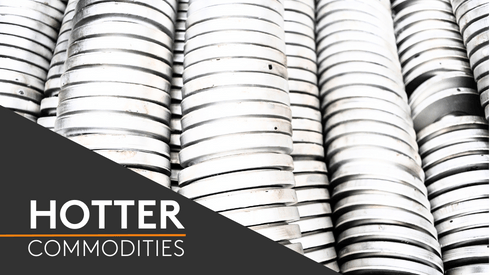In 2023, something strange happened. The health of China’s metal-intensive construction sector nosedived when high-profile property developers, such as Evergrande, filed for bankruptcy. Yet the country’s demand for primary aluminium reached record-high levels.
The reason was because falling construction demand for the light metal was compensated by increased aluminium use in the energy transition industries.
“Aluminium is already playing a vital role in energy transition,” Fastmarkets analyst Kirstine Veitch said. “From lightweight electric vehicles, solar panels and wind turbines, to the cabling used to transmit the power generated from these renewable sources to national grids, and to key end-user demand, aluminium is a critical raw material.
“In each of these industries,” she said, “aluminium offers decarbonization pathways.”
Inform your base metals strategy with metals price forecasts and analysis for the global base metals industry. Access the forecast now.
Solar panels
According to a report by Dutch bank ING, “aluminium is the single most widely used mineral material in solar photovoltaic [PV] applications. The metal accounts for more than 85% of the mineral material demand for solar PV components, [in uses ranging] from frames to panels.”
With energy transition picking up pace and more solar panels being built, the PV industry is becoming an increasingly important source of aluminium demand. That is particularly evident in China, which holds 80% of global solar-panel manufacturing capacity.
China’s PV capacity reached 397GW in 2022, up from 130GW in 2018. And making more solar panels meant using more aluminium.
Sources at China-based financial institutions have told Fastmarkets that aluminium’s use for solar panels grew by more than 400% in only four years. Three different sources told Fastmarkets that the PV industry’s aluminium consumption has increased to projected use of 4 million tonnes in 2024, from less than 1 million tonnes in 2020.
Electric vehicles
Aluminium plays a key role in electric vehicles (EVs), where it is used in “e-drive and battery pack housings, ballistic battery protection and cooling plates,” the ING report said.
But aluminium also has growing importance in conventional vehicles powered by internal combustion engines. Reducing a car’s weight allows ICE vehicles to use less petrol and thus to cut emissions.
According to consultancy firm Ducker Carlisle, the average amount of aluminium used per vehicle increased to 205kg in 2022 from 121kg in 2006. It is likely to reach 256kg in 2030.
The shift to renewable energy will require a massive expansion of the power grid, and that will further boost aluminium demand. The light metal is increasingly being used to replace copper in transmission cables. Adjusted for conductivity, aluminium is both lighter and cheaper than copper.
According to research by trader Trafigura, China’s three fastest-growing exports, in dollar-value terms, are batteries, cars and solar panels. That is already starting to show in aluminium consumption figures.
China’s annual primary aluminium demand is expected to reach 43 million tonnes in 2024, up from 29 million tonnes in 2015. The rest of the world’s aluminium consumption is broadly flat, expected to reach 29 million tonnes in 2024, up from 27 million tonnes in 2015.
The numbers are impressive, but one trader source told Fastmarkets that “aluminium’s role in the energy transition is underappreciated” by the metals market.
Energy transition will have an even greater effect on aluminium demand in the coming years, European aluminium producer Norsk Hydro said.
The company estimates that, by 2030, energy transition will require 15-22 million tonnes of additional aluminium. By 2050, energy transition will need 25-42 million tonnes of extra aluminium in addition to conventional consumption.
But while aluminium plays a bigger role in energy transition, its own environmental effects will come under greater scrutiny, Veitch said.
“The double-edged sword here is that primary aluminium production itself is a very power-intensive process,” she said. “So, to prevent offsetting the decarbonization gains achieved through the use of lightweight, recyclable aluminium, the type – or at least the carbon footprint – of the aluminium that is required to meet the accelerating demands of energy transmission will need to adapt.
“This process of adaptation is already well under way,” she added, “from the use of primary [aluminium] produced using hydro [-electric] power, to the growing use of end-of-life scrap, but the rates of adaptation will need to quicken to meet future goals.”
Some European carmakers are starting to demand low-carbon aluminium.
The low-carbon aluminium market is most highly developed in Europe, where Fastmarkets launched its aluminium low-carbon differential P1020A, Europe, in March 2021.
That was followed by the November 2023 launch of the aluminium low-carbon differential P1020A, US Midwest.
Most recently, on March 1 this year, Fastmarkets launched the aluminium low-carbon differential P1020A, Japan, South Korea, to bring transparency to the low-carbon aluminium market on a broader geographical scale.
To understand the complex market conditions influencing price volatility, download our monthly base metals price forecast, including the latest aluminium price forecasts today. Get a free sample.






